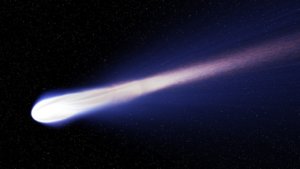
by Dr Manjir Samanta-Laughton | Dec 30, 2020 | Paradigm Revolution, Punk Science, Science
Volcanoes are supposed to be hot, so why are cold volcanoes found all over the solar system? In this article, we are going to be exploring Cryovolcanism.
Hot vs Cold
You are probably aware of volcanic activity on Earth – Volcanoes spew hot lava which is molten rock and various gases. It is believed that heat is part of the mechanism of why volcanoes occur. So why is it that ice-cold cryovolcanoes are being found in various part of the solar system? How can volcanoes be cold?
Not only does cryovolcanism exist but we are finding it throughout the solar system. The dwarf planet, Ceres was expected to be a boring, inactive lump of rock. But instead, we found cryovolcanoes on Ceres as well as on Titan, which is one of the moons of Saturn and also on Pluto.
Pluto is really far out from the sun and so we expect it to be extremely cold, frozen and inactive. So the volcanic activity on Pluto was a bit of a surprise.
Do we really understand volcanoes?
It may all come down to the fact that we have mistaken what volcanoes are in general. We think we know how volcanoes work on planet Earth. But if you look closely, you will see that people who study these things don’t really know exactly why volcanoes happen. This issue of Geographical magazine contains an article that admits that we don’t even know the basics of how volcanoes work.

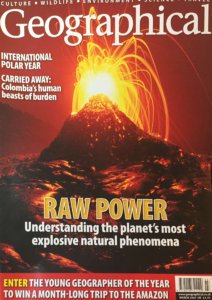
So it’s a bit of a misnomer to say that we know exactly why volcanoes happen on Earth, let alone cryovolcanoes in space.
Commonalities in eruptions
I think we should look beyond individual types of eruptions to a single mechanism that unites them all. What I’m saying is that eruptions and volcanoes are all expressions of the same principle: The Black Hole Principle.

The Black Hole Principle
If you remember, The Black Hole Principle says that light comes in from higher dimensions and then splits into matter and antimatter and these combine again to form light. So you have these intermittent eruptions of energy and particles.
We have also looked in previous episodes at how The Black Hole Principle creates water and even substances that we normally call ‘fossil fuels’ such as methane.
And that’s indeed what we see coming out of these Cryovolcanoes: methane, water, and ammonia.
In fact, we actually see water vapour coming out of volcanoes on Earth as well. In another previous episode, we looked at how stars actually emit water bullets.
Transcending the eruption
This is what I’m putting forward, that we have to transcend this concept of a volcanic eruption of ‘stuff’. The energy starts out in a different dimension and comes through and expresses itself at every single level of the universe.
So whether that be a hot planet or a cold planet, the energy is the same. The principle is the same. The Black Hole Principle is creating volcanoes at every level that we see them. Cryovolcanism is to be expected because all these planetary bodies are working in the same way just at different scales and temperatures.
Predictions and Conclusions
We not only expect to see more eruptions happening in our own solar system but even beyond our solar system because they are caused by a universal principle.
I hope that’s explained a bit more about cryovolcanism and volcanism in general, if you’d like to see more, please subscribe below and leave a comment to let me know what you think.

by Dr Manjir Samanta-Laughton | Jun 10, 2020 | Paradigm Revolution, Punk Science, Science
We are used to comets having long tails but recent investigations show us that comets give off fine jets, but why?
The Old Picture of Comets
We tend to think of comets as snowballs in the sky with long tails.
Ancient people used to think that they were signifiers of doom.
But it’s only in recent years that we have been able to study them in more detail because the European Space Agency has sent probes to various comets.
New Surprises
And what they found was a big surprise.
Instead of just one long tail as the comet nears the sun, comets actually give off jets of vapour and dust including water vapour.
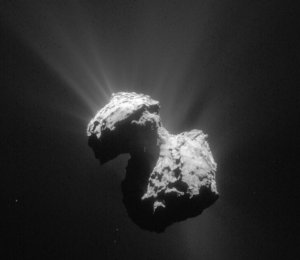
ESA/Rosetta/NAVCAM – CC BY-SA IGO 3.0
These can also be accompanied by an increase in brightness.
The video above contains another image of a comet with jets spinning through space.
Too much power
At first, people thought that these plumes must be caused by the sun which heats up ice and gases beneath the surface.
But these plumes erupt with so much power that there must be another energy source involved.
Black holes and comets
Of course from the perspective of The Black Hole Principle, we would expect comets to give off jets intermittently including water vapour.
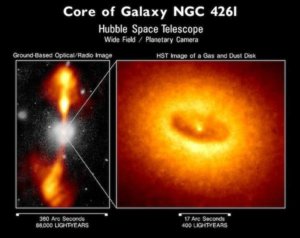
That’s because the same process is happening at different scales from a galactic black hole to even a comet.
Just as black holes give off intermittent jets, so do comets.
I hope you have enjoyed this episode of Punk Science TV.
Please leave a comment below with your thoughts about comets, jets and black holes.

by Dr Manjir Samanta-Laughton | May 24, 2020 | Punk Science, Science
Bizarre though it seems, stars are shooting out water. We take a look at the link with The Black Hole Principle.
This is a topic that I think should be discussed more often; water is ejected from stars in space that are extremely hot. It sounds like science fiction but it is true.
Water has been detected coming from stars including our own sun.
Young star ejects water bullets
There is an example of a young star 750 light-years from Earth which is ejecting water jets from its poles at a speed of about 124,000 miles per hour. ESA’s Herschel Space Observatory, which spotted this, seems to have detected water in liquid form before it vapourised. Then it became liquid again once it had travelled far from the star.

Is it raining on the sun?
Closer to home we have also seen water vapour being emitted from sunspots as early as the 1990s. It isn’t just young and middle-aged stars that have been spotted ejecting water. We have also seen it coming from brown dwarves too.
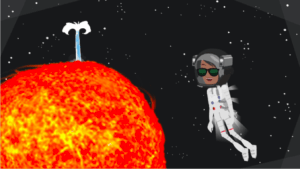
So what is happening?
Predicted by The Black Hole Principle
These findings, which mainstream scientists don’t often discuss, makes total sense in The Black Hole Principle. According to the theory, we see water ejected in jets at every level of the universe. We do indeed have evidence for this. We have witnessed water coming from supermassive black holes in galaxies as well as in thunderstorms (as rain) and geysers here on Earth. It is the same pattern. That’s why both supermassive black holes and our weather systems eject antimatter and gamma rays.
So we would expect stars to be ejecting water. In fact, this is possibly the only scientific theory in the world which expected to see water from stars.
And why from poles and sunspots? Because in the Black Hole Principle the bipolar jet configuration of ejection is quite common. As for sunspots – the sun is in a fractal pattern of black holes. Sunspots are smaller black holes on the larger black hole central to the sun.

Insights into the theory
These findings also give us some insight into the mechanism of the Black Hole Principle itself. The paper that said that water is found in liquid form near the gas jets from the stars could give us some clue if water is being ejected by The Black Hole Principle fully formed as a molecule. It would suggest it could be.
The concept that stars emit water doesn’t fit the pattern of mainstream science though which is why I think that these findings are not discussed very much if at all.

by Dr Manjir Samanta-Laughton | May 12, 2020 | Punk Science, Science
Wildfires create thunderstorms – are these mini black holes? If so, are they the cause of the fires? Because we know that thunderstorms are created by the same mechanism that creates black holes in the centres of galaxies, the possibility then exists that the lightning exuded by the clouds associated with wildfires could actually be the cause of wildfires and not just a consequence of them.
In this article, I ask the audacious question, do black holes create wildfires?
Wild devastation
In early 2020, the world was rocked by the devastating news that wildfires across Australia had caused massive destruction and the near extinction of some species. It isn’t just Australia which suffers such losses.
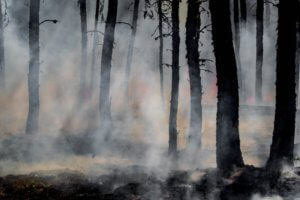
Unsplash
Other countries such as the USA also regularly experience wildfires. It is assumed that there is an initial spark probably caused by the sun or even human carelessness. Vegetation that has dried out provides ample fuel for wildfires to quickly go out of control.
Wildfire storms
There is a phenomenon associated with wildfires that caught my attention: the storms that appear alongside wildfires that can sometimes produce lightning thus spreading the fire even further.
So what is happening here? Conventional science, of course, doesn’t fully understand how lightning is generated as discussed here so wildfire storms are even more poorly understood. In case you are thinking that they are caused by friction and static build-up in clouds, think again as this theory has long been disproved by scientific data.
Dangerous clouds
What we can observe associated with wildfires is that a type of cloud called a Pyrocumulonimbus. It was originally thought that these clouds were rare but now scientists are realising that they are a fairly common occurrence with wildfires. These clouds produce lightning but do not always produce rain.
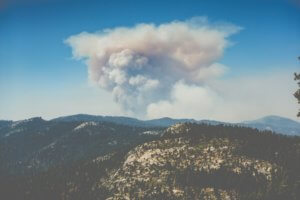
Unsplash
As you can imagine, the lightning from these clouds can ignite further fires and worsening the situation.
But knowing as I do, that thunderstorms show the same characteristics as larger black holes in space, I decided to investigate wildfire storms. What I found was very intriguing.
Intriguing characteristics
Although the pyrocumulonimbus clouds are associated with wildfires, they are very similar to those found around volcanoes. This, of course, is to be expected according to The Black Hole Principle theory, because each level of the universe is working according to the same pattern.
It has also been found that wildfire storms are able to shoot material high into the Earth’s atmosphere, to the point where they have been mistaken for volcanic eruptions.
Again this would fit with the bipolar jet activity that we see associated with black holes from galactic centres all the way down to quarks. These clouds have also been witnessed showing vortex behaviour – similar to a tornado.
Rarely, sometimes there will even be a fire tornado associated with bushfires.
I then found myself wondering, have we got things the wrong way round? Do black holes create wildfires?
The Black Hole Principle and Wildfires
We know that Black Hole Principle activity fluctuates; they are sometimes active, sometimes not. They appear in different areas at different times. This is what gives this and other planets their weather systems.
So maybe what is happening in some wildfires is that black holes themselves initiate in an area, these create lightning which ignites the dry vegetation causing the fire to spread. We see further mini black holes in the area which create the pyrocumulonimbus clouds, lightning strikes, ejection of material high into the atmosphere and sometimes rain.
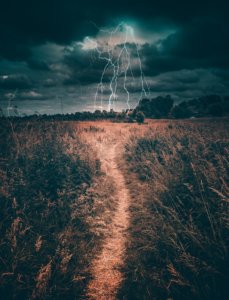
Unsplash
Sure, some wildfires are created for other reasons such as human negligence but effectively the ones created by lightning are being created by mini black holes!
By understanding The Black Hole Principle better, we may be able to manipulate the behaviour of black holes around forests and help to control the initiation of wildfires thus preventing the widespread destruction that they cause.

by Dr Manjir Samanta-Laughton | Apr 22, 2020 | Punk Science
Why do we perpetuate lies about lightning despite the evidence? In this article, we will examine lightning and lies.
Introduction
There are 40-100 lightning strikes per second around the planet.
For something that is so common you would think that we have an explanation for lightning.
But that’s where you would be wrong. Because not only do we not have an explanation for lightning but people lie and pretend that we have it all sussed out.
But we know this, don’t we?
You are probably thinking – we do have an explanation for lightning. It’s a basically big form of static electricity.
Just as when we walk across a dry carpet, get charged up, touch a metal door handle and get a shock, so it is with lightning and clouds in thunderstorms, only bigger.
The usual story
You may have even heard an explanation like this one.
Clouds contain ice particles and hail that rub together and get charged up. The negatively charged particles fall to the lower part of the cloud and the positively charged particles to the top.
This causes the positive charges on the ground to build up and eventually there is a spark of lightning between them
This story is being told to children everywhere.
There’s one problem.
It isn’t true.
Why?
Because…Science!
The Evidence
We have done experiments to show that not nearly enough charge build-up in clouds to create lighting with the characteristics that we observe.
And for negative charges being at the bottom and positive at the top – turns out there are positive charges at the bottom too.
So why do we perpetuate the lies?
Covering the Discomfort
Because we don’t have an explanation for something that is very common on the planet.
It’s easier to ignore the scientific fact that the static electricity hypothesis has been disproven than face the fact that we cannot explain something that happens on our planet over 40 times a second.
With the Black Hole Principle – the same mechanism that occurs at the centre of a galaxy occurs in thunderstorms – hence we find antimatter, gamma rays and x-rays in thunderstorms just as we do in black holes. Not to mention water!
We also find bipolar jets in storms just as we find in black holes.
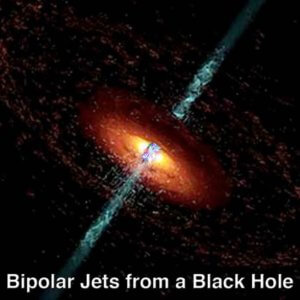
The theory can also explain the power of lightning and thunderstorms because The Black Hole Principle is powered by infinite light!
It’s time we stopped lying to children and paid attention to the scientific facts.







